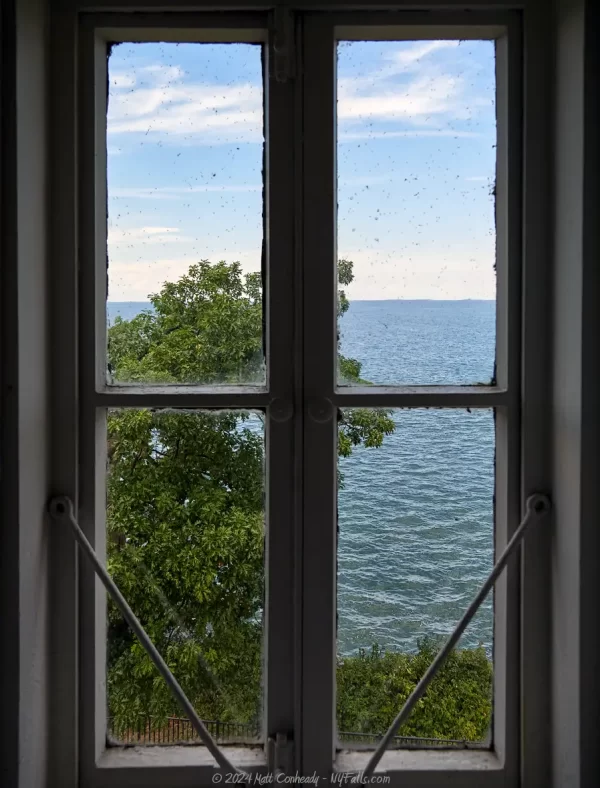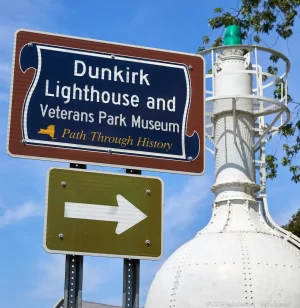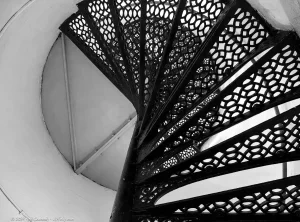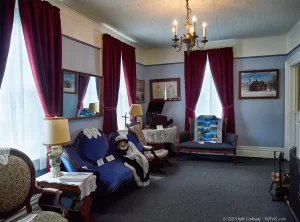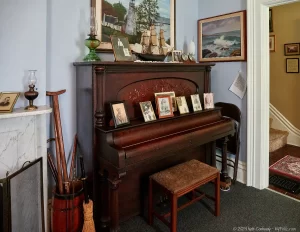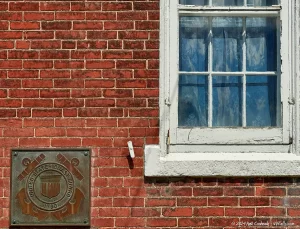Dunkirk Lighthouse & Veteran’s Park Museum

Location: On the east end of Lake Erie; in the city of Dunkirk; town of Dunkirk; Chautauqua County; New York.
Maps: Google map; Topographic; Interactive map
GPS Coordinates:
- Lighthouse and Keeper’s quarters: N 42.49382 / W 79.35389
- Entrance: N 42.49311 / W 79.35344
Directions: From east and west:
- Follow NY-5 to Dunkirk.
- On the west side of the city, turn north onto Point Dr. N.
- As Point Dr N turns left, look for the entrance to the Lighthouse property on the right. You’ll see a driveway through a black iron gate and a white metal nautical beacon structure at the entrance.
Use Google Maps.
Parking: The gravel parking lot on premises has room for 20 or so cars. If it’s full, you may be able to find parking within walking distance at Cedar Beach or Point Gratiot Park.
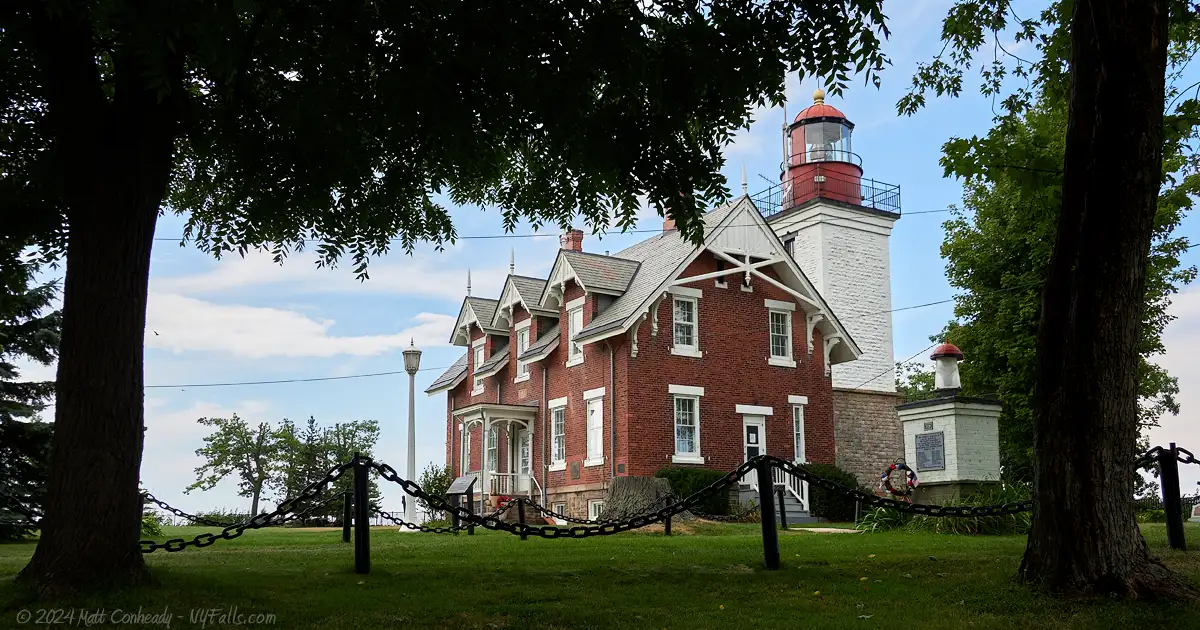
Weather
Information / Accessibility / Accommodations
Seasons/Hours: Hours vary based on season:
- May – June: Daily 10am to 2pm (Last tour at 1pm)
- July – August: Daily 10am to 4pm (Last tour at 3pm)
- September – October: Daily 10am to 2pm (Last tour at 1pm)
Admission: You can walk the grounds and visit the gift shop for free. A fee is charged to access the interior of the lighthouse, museums, and take the tour. In our opinion, it’s well worth it.
- Adults: $10 ea.
- Seniors, Students & Veterans: $8 each.
- Children: $3 ea.
- Family (2 adults and up to 3 children 4-10 y/o): $25
Best time to visit: May through October. It does get a little busy in July-August.
Time: About 30 minutes to walk the grounds. If you pay the admission, the tour (or a self-walkthrough) of all the interior and exterior sights can take over an hour. The more you are interested in the history, the more time it’ll take.
Handicap accessibility: Unfortunately, because the site is historic, it’s also not very accessible. The parking lot and main pathway to the visitors center are gravel. There is a concrete walkway leading from the visitors center/gift shop to the lighthouse, and then the museum and restrooms.
Pets: Pets are not allowed.
Swimming: Swimming is not allowed at this location. Swim at the guarded areas or at Point Gratiot or Wright Parks.
Boat launch: There are no boat launching facilities here. If you need to launch, head east to Dunkirk City Pier or west to Barcelona Harbor. For hand launch, Point Gratiot Park or Cedar Beach are closest.
Accommodations: Historic signage, restrooms, gift shop (with snacks), museums, historical artifacts, guided tours, events.
Description
The Dunkirk Lighthouse & Veterans Park Museum, perched on the tip of Point Gratiot on the shores of Lake Erie, offers a captivating blend of natural beauty and rich historical significance. As one of the few still-operational lighthouses in the area, it provides a rare glimpse into the life and duties of a lighthouse keeper through its well-preserved structure and accompanying keeper’s house, which now serves as a museum. Visitors are invited to climb the lighthouse’s spiral staircase to reach the lantern room, where they are rewarded with stunning, expansive views of Lake Erie, the Dunkirk Harbor, and the area’s dramatic coastline.
The 61-foot stone tower, topped with a 3rd-order Frensel lens, is attached to a beautiful victorian keeper’s residence, both constructed in 1875-1876. The first floor of the former residence now serves as a meticulously curated museum, with accurately decorated rooms depicting family and work life on duty while the lighthouse was in service. The second floor, in addition to an external area on the east end of the site, are filled with military artifacts, which include plenty from the War of 1812, battles of which took place just offshore from Dunkirk, and service abroad. Exhibits include uniforms, medals, photographs, and personal items that belonged to veterans from the local area, providing personal insights into the lives of those who served. Each item tells a story of courage and sacrifice, aiming to educate visitors on the profound impacts of military conflicts on soldiers and their communities. Each room is packed to the gills, and for those interested in our nation’s military past, it can easily take hours to browse.
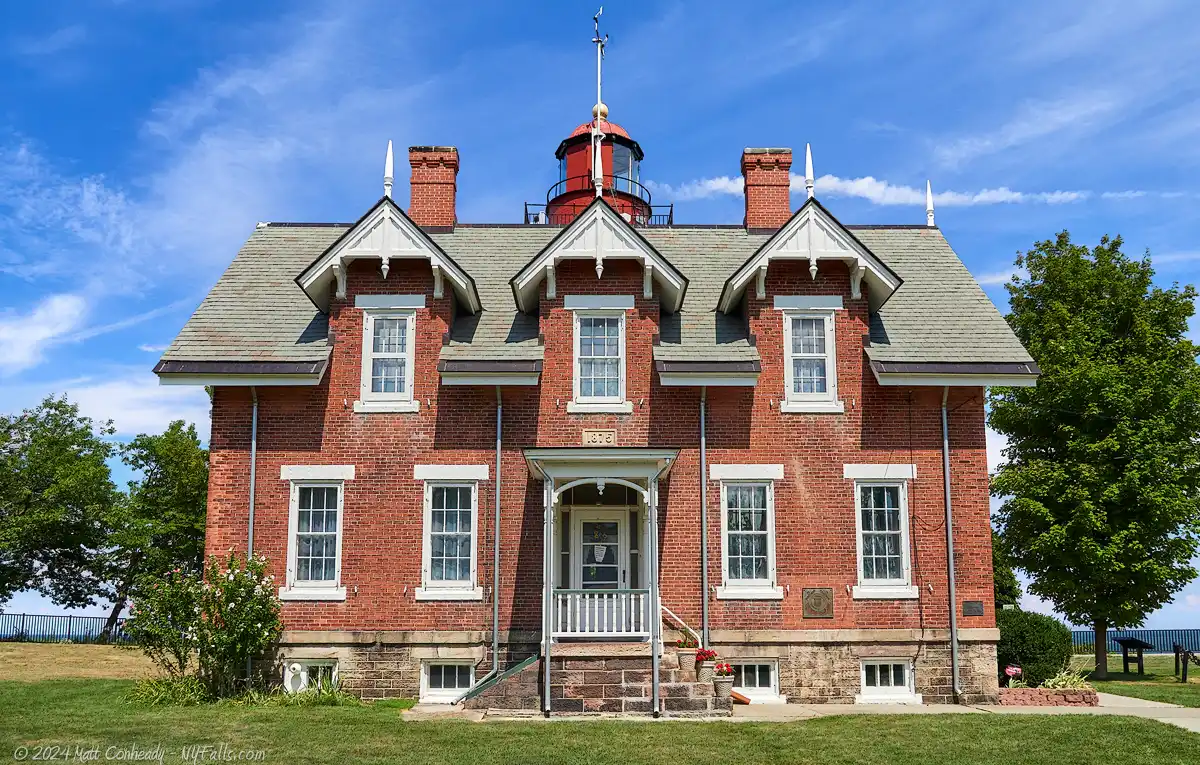
When we visited in late summer of 2022, we were at first reluctant to take the tour, as we were fans of neither the maritime history nor the military aspect. Our guide, a local volunteer, changed that within a matter of minutes. Every corner of the museum, every piece of decor, all the various military models, badges, and uniforms had a story worth telling, and he seemed to know them all. It drastically changed our perspective, and the price of admission quickly felt like a massive value. I just hope we didn’t overwhelm our guide with all the questions we had along the way.
Together, the Dunkirk Lighthouse & Veterans Park Museum serve not only as a beacon for ships but also as a beacon of historical preservation and education in the community. The site hosts various community events throughout the year, including reenactments, veteran memorials, and educational programs, which strengthen the connection between the lighthouse and the community it serves. These events help keep the history alive, ensuring that each generation understands and appreciates the significance of this maritime icon. It is an ideal destination for history buffs, families, and nature lovers alike, providing a meaningful and picturesque experience that highlights both the natural beauty and historical depth of Dunkirk, NY and the Great Lakes.


History
The completion of the Erie Canal in 1825 revolutionized transportation between the Midwest and the Atlantic Coast, making the Great Lakes a key economic route. This development heightened the need for safe navigation, leading to the establishment of several lighthouses including one at Dunkirk in 1826-27. Built on land donated by local prominent citizen Walter Smith, the Dunkirk Lighthouse was constructed by Jesse Peck and other local laborers and built from local materials. Intended to be lit by natural gas as the Barcelona Harbor light was, but due to the lack of a nearby source of the gas, it utilized whale oil instead. Following the federal government’s construction of a harbor breakwall in 1827, a secondary pier head light was also installed, both to be maintained by the lighthouse keeper.

The keeper for the first 4 years was Walter Smith, himself, who served until 1831 when President Andrew Jackson appointed Abraham Day as keeper. As a boy, Day had served as a drummer for Jackson’s army during the Seminole Wars and, after, came to live at Jackson’s home as an adopted son until adulthood.
In 1838, the Dunkirk Lighthouse was temporarily decommissioned due to the belief that a newly erected pierhead beacon at the harbor’s entrance would suffice for navigation. However, it quickly became evident that the lighthouse was crucial for safely navigating a challenging part of the channel, as it was the most prominent beacon on Lake Erie’s southern shore and worked in conjunction with the harbor beacon. The pierhead beacon alone was insufficient as it needed significant elevation to be effective. Recognizing this oversight, the Dunkirk Lighthouse was promptly reactivated.
In 1857, the Dunkirk Lighthouse was upgraded with a new kerosene lantern and a third-order Fresnel lens crafted by Henry-Lepaute in Paris. The innovative lens featured a fixed main lens with three revolving panels on chariot wheels around its exterior, creating a flashing signal. This configuration resulted in a light characteristic described as F.V.W.F., which stands for “fixed varied with flash,” enhancing the lighthouse’s navigational aid capabilities.
In 1868, the Dunkirk Lighthouse was reported to be in poor condition, with issues ranging from leaks in the keeper’s dwelling and the main tower’s cracked structure to decaying beacon towers. By 1874, the tower’s condition had worsened, posing risks to both the structure and its occupants. Consequently, a $15,000 fund was approved in March 1875 for rebuilding. A sign marking the original tower site can be seen at the iron fence on the northwest edge of the park. The original tower was relocated and a new one built around it in its present-day location. The land the original tower was on has since been eroded away.
On July 1, 1876, the new square limestone tower of the Dunkirk Lighthouse, featuring a spiral, cast-iron staircase, first shone its light. Standing sixty-one feet tall, the tower remains in use today. Attached to it is the keeper’s dwelling, an exquisite example of High Victorian Gothic architecture crafted from red brick. The symmetrical exterior of the dwelling is enhanced by three large dormer windows on both the north and south sides, each supported by vintage wooden braces, while the gabled ends of the roof are adorned with decorative boarding and brackets.
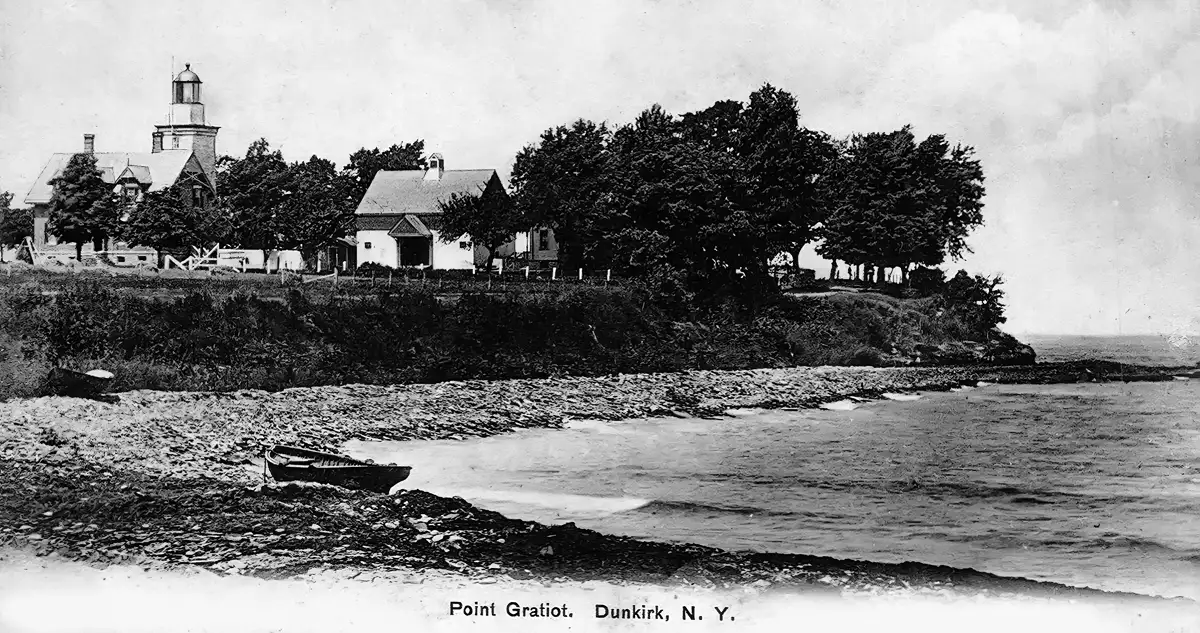
In 1896, the Dunkirk light station was connected to the city’s waterworks via nearly a thousand feet of iron piping, and the following year saw the completion of a new dwelling for the assistant keeper. The assistant keeper’s dwelling serves as the gift shop today. At the turn of the century, the station received several upgrades, including a forty-gallon hot water tank, a galvanized iron fence, and an iron oil house for storing kerosene. In 1901, the flash panels’ rotation speed was increased, altering the light’s characteristic, and by 1912, the illuminant was switched from kerosene to incandescent oil vapor, significantly boosting the light’s intensity.
The tower was electrified in 1923, followed by the harbor beacon in 1935, eliminating the need for keepers to manually maintain the lights. Consequently, the role of assistant keeper was phased out, and the assistant keeper’s dwelling was leased to local families. During World War II and briefly thereafter, 12 active Coast Guard personnel occupied the residence.
Around 1961-62, the lighthouse lamp and harbor beacon were automated and keepers were no longer needed. While still occasionally maintained by the Coast Guard, the dwelling began to fall into disrepair. In 1979, the Dunkirk Lighthouse was added to the National Register of Historic Places. Five years later, in 1984, the Coast Guard handed over the lighthouse and surrounding grounds to a newly established museum, now known as the Dunkirk Lighthouse & Veterans Park Museum. While the Coast Guard continues to manage the lighthouse’s light, museum volunteers monitor the lamp changer, alerting the Coast Guard when replacements are needed.

Dunkirk Lighthouse Keepers
- Head: Walter Smith (1827 – 1831), Abraham Day (1831 – 1841), Joseph B. Hall (1841 – 1845), John Cassity (1845 – 1849), Wilber Gifford (1849 – 1853), John G. Cassity (1853 – 1861), Henry Severance (1861 – 1869), Charles G. Harrison (1869 – 1870), Jefferson C. Richardson (1870 – 1872), Henry Severance (1872), Byron Rathbun (1872 – 1873), Benjamin F. Averill (1873 – 1884), Robert T. Taggert (1884 – 1887), Samuel A. Penfield (1887), Peter J. Dempsey (1887 – 1902), John T. McDonough (1902 – 1928), Francis D. Arnold (1928 – 1950), William R. Gannon (1950 – 1956), Arthur G. Bauman (1957 – 1961).
- Assistant: James S. Comstock (1867 – 1873), Elias D. Hart (1873 – 1874), William Sinfield (1874 – 1885), John D. O’Connor (1885), Peter J. Dempsey (1885 – 1887), John T. McDonough (1888 – 1902), Andrew Fredenburgh (1902 – 1907), Tom H. Holtan (1907 – 1909), Francis D. Arnold (1909 – 1928).
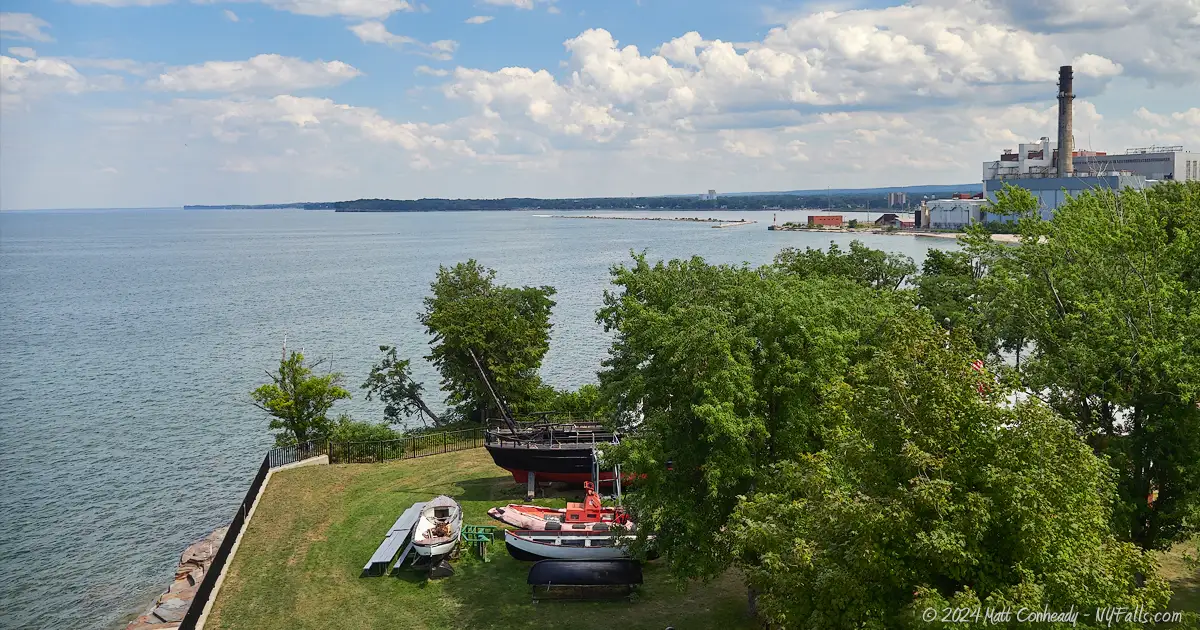
Hiking / Walking Trails
Difficulty: Easy.
Markings: Some historical and park signage scattered throughout.
Description: If you are taking the tour, follow the guide. They know best. If you are on your own, check out all the sights on the map below.
Map: Check out the interactive map.
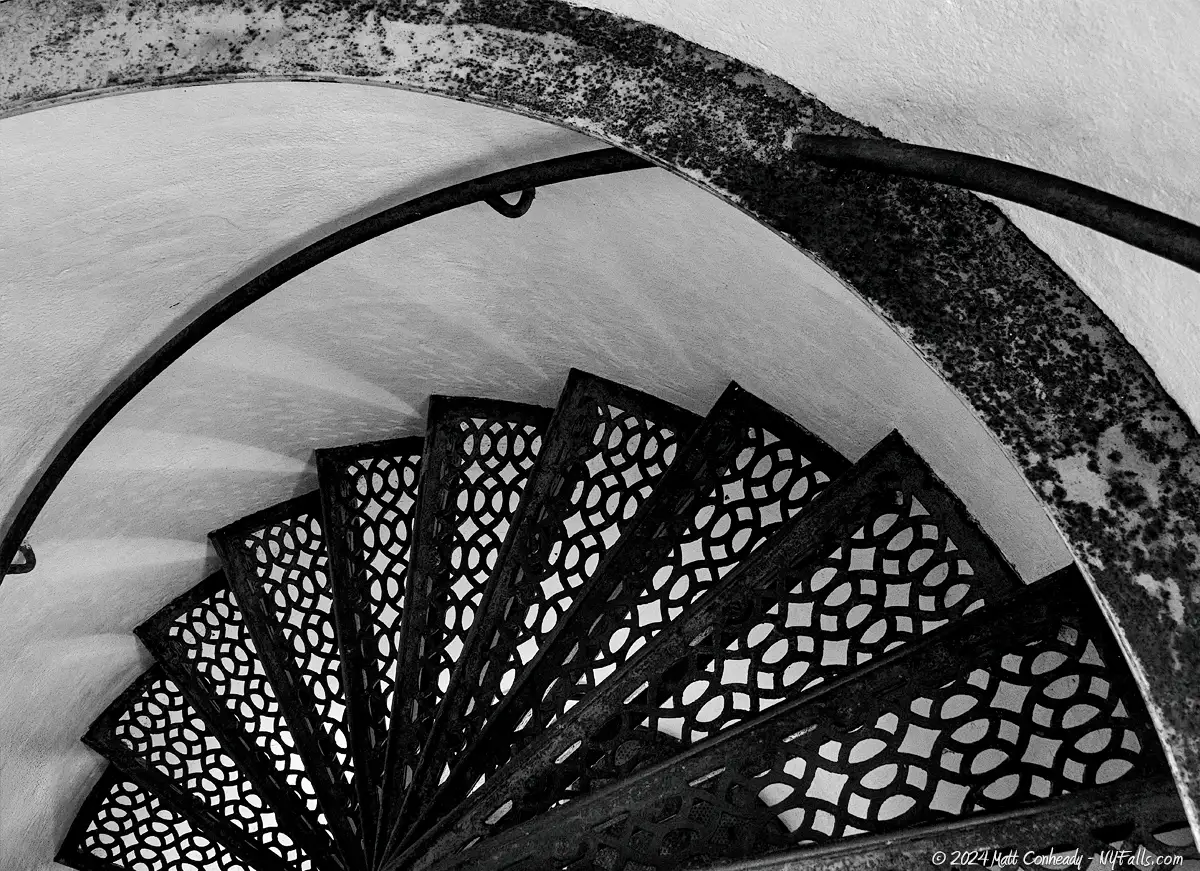
Dunkirk Lighthouse Interactive Map
Fishing
Fishing is not allowed from this site. Fish at Point Gratiot Park, Cedar Beach, or the Dunkirk City Pier.
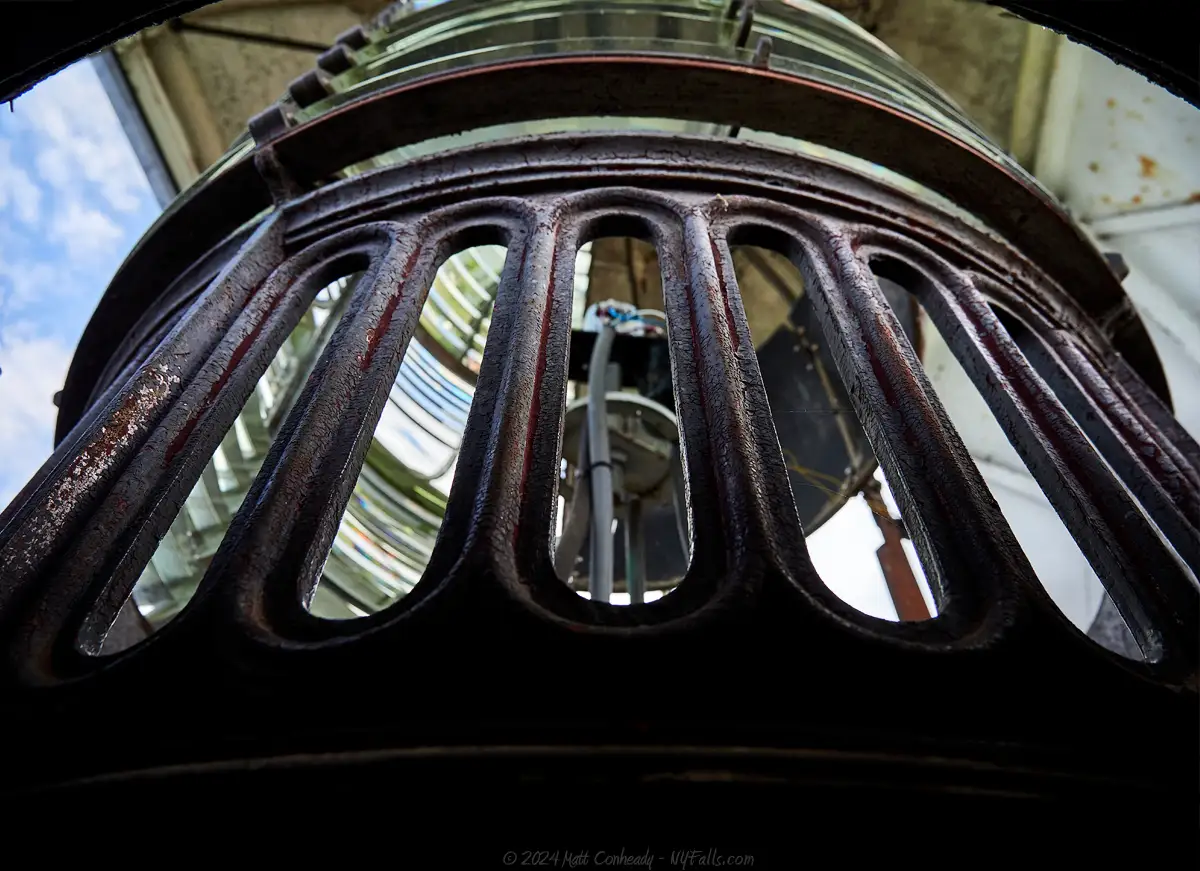
Interesting Stuff
Lighthouse Passport Stamps
- The U.S. Lighthouse Society’s Passport Program is designed for enthusiasts who visit lighthouses across the United States. Participants can purchase a passport booklet and receive a unique stamp at each lighthouse they visit, similar to a traditional passport stamp from international travel. This program encourages the exploration and appreciation of lighthouses, while also supporting preservation efforts by increasing visitor engagement and awareness. It’s a fun way for travelers and history buffs to keep a tangible record of their visits to these historic sites. More information can be found here.
Dunkirk Shipwrecks
- On August 9, 1841, the tragedy of the Erie, a Chicago-bound steamboat, occurred when it caught fire, resulting in the loss of approximately 150 lives, mostly German and Swiss immigrants. The fire was caused by painters who carelessly left flammable materials such as turpentine and varnish on deck, above the ship’s boiler room. The fire quickly engulfed the ship after an explosion around 8pm. The steamboat Dewitt Clinton responded to the emergency, managing to rescue twenty-seven survivors from the devastating blaze. The steamboat wreckage was found in 1842 about 5 miles off the coast of Silver Creek.
- An 80-ft long, unidentified schooner was found about 20 miles northwest of Dunkirk. Likely from anywhere between 1790 and 1850, its precise origin and purpose has yet to be determined. Wreck location.
- In 1893, the wooden cargo ship Dean Richmond sank near Dunkirk during a storm. Carrying precious metals and other valuable materials from Toledo, OH to Buffalo, NY, the ship capsized when copper sheets shifted under gale-force winds as the captain attempted to navigate into Dunkirk Harbor. The aftermath saw hundreds of bags of flour from the ship’s cargo wash ashore. The local lighthouse keeper, Peter J. Dempsey, and his family recovered and salvaged these flour bags, baking many loaves of bread and cakes after drying and processing the flour. Wreck location.
- More shipwrecks are catalogued here.
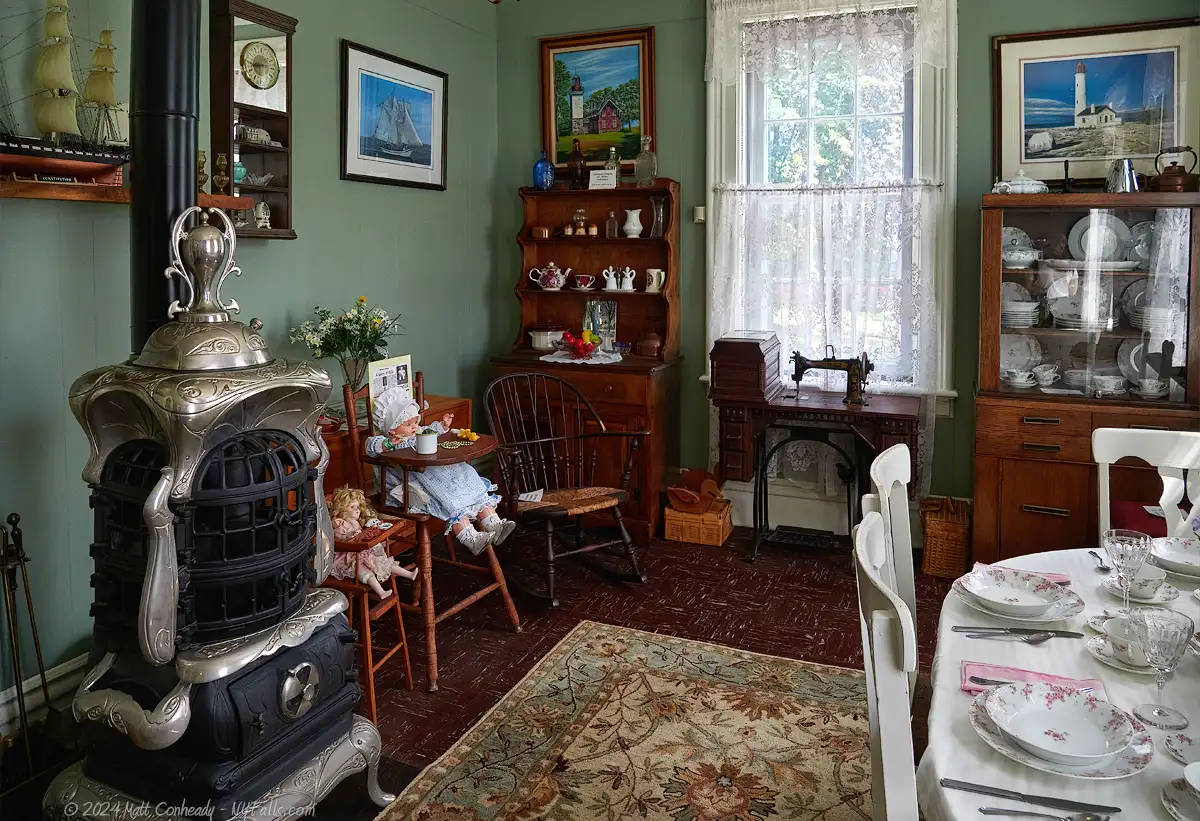
Photography Tips
Shoot Wide
- Space is limited here and the lighthouse is tall. Bring your wide angle lens to be able to capture the structure in its entirety.
Dramatic Skies
- Head out on partly cloudy days with dramatic clouds to be able to capture views of the lighthouse and Lake Erie with a stunning backdrop.
Take the Tour
- Paying for the tour gets you access to the keeper’s quarters interior and to the top of the tower.
More tips
- See the Articles and Message Board sections for more photography tips.
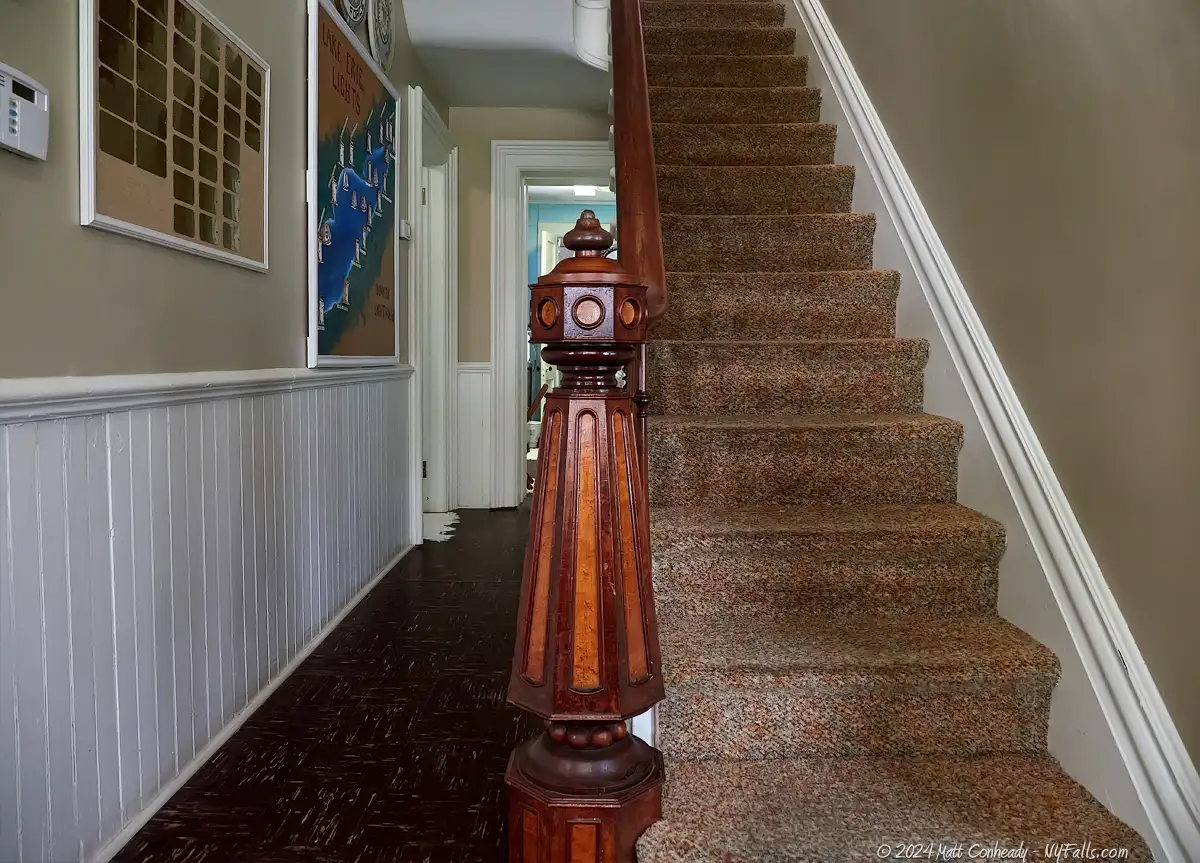
Nearby Waterfalls
More Lake Erie Parks & Beaches
Find a new summer hangout spot or place to swim in our comprehensive guide to Lake Erie Parks and Beaches in New York State.
Who to Contact
Dunkirk Lighthouse & Veterans Park Museum
716-366-5050
[email protected]




